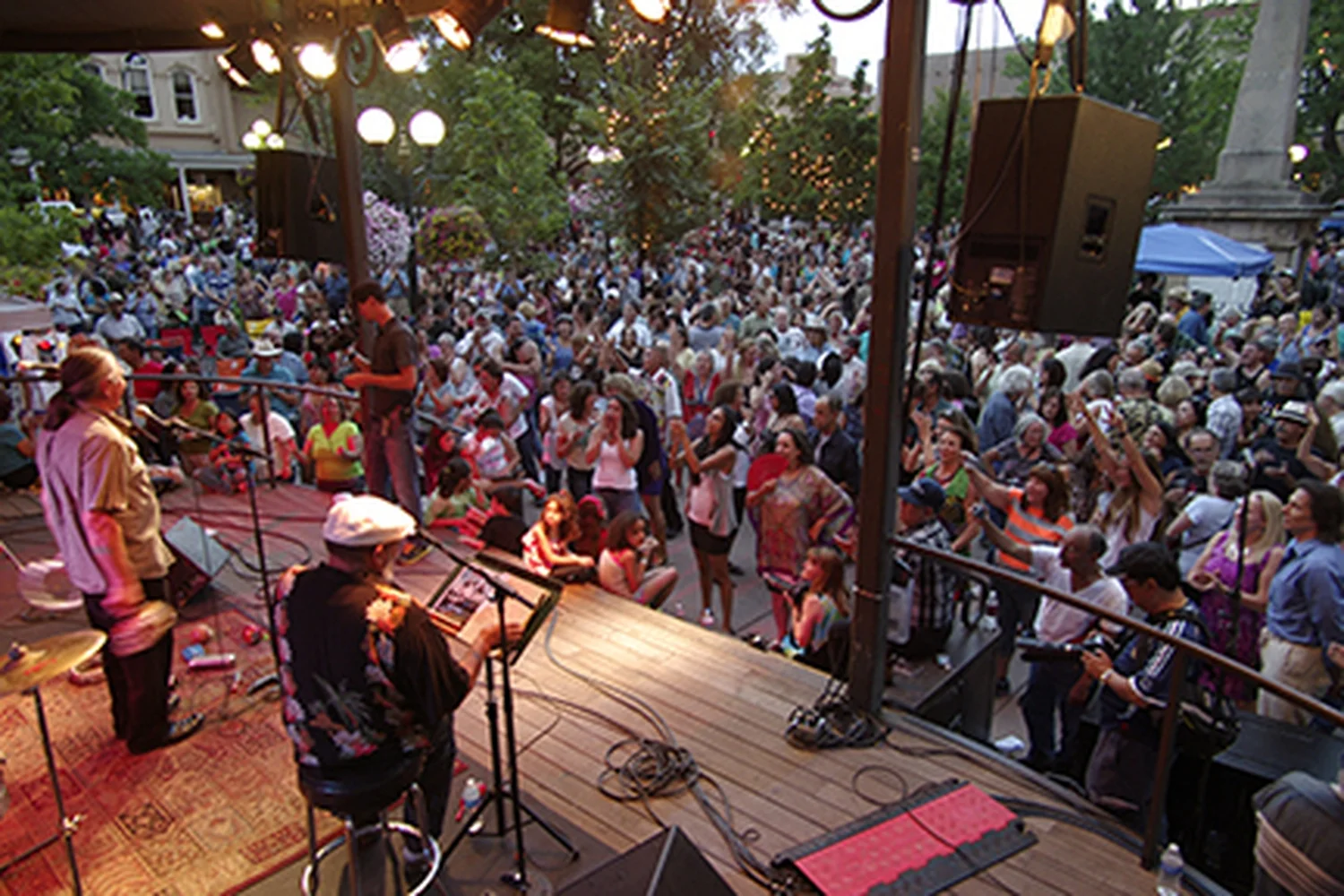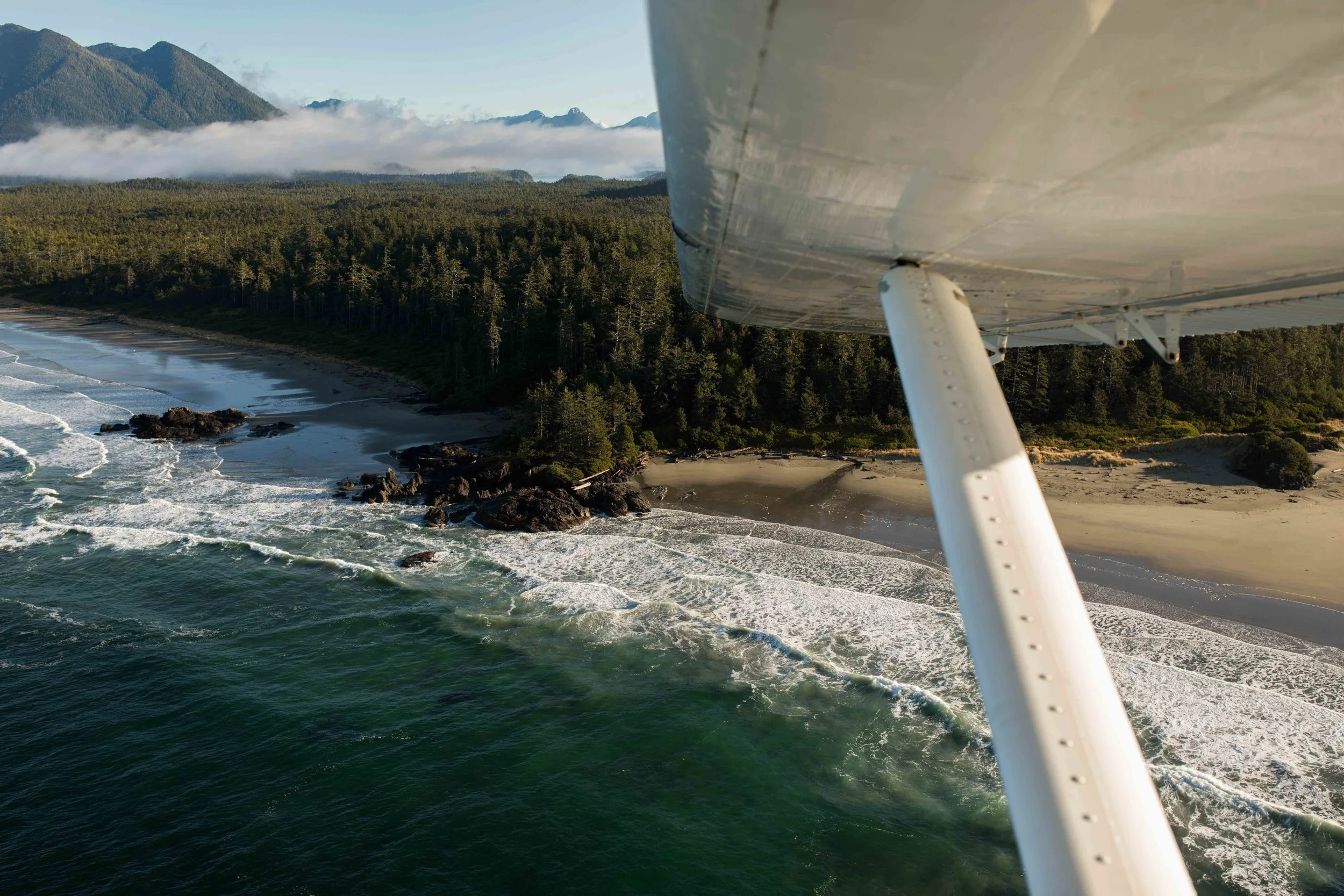
Whether your aviation experience is just taking off or a lifelong aviator Gear Up, Flight Level’s aviation blog, brings you industry insights, aircraft reviews, business aviation news, and everything flight level.
National Aviation Day - A Look Forward
December 1903 marked man’s first true attempt to conquer the skies. Since then, we have flown passengers to every edge of the globe, gone supersonic and walked on the moon all in the last 115 years. So what will the next 50 years of progress look like?
Today is National Aviation Day!
December 1903 marked man’s first true attempt to conquer the skies. Since then, we have flown passengers to every edge of the globe, gone supersonic and walked on the moon all in the last 115 years. So what will the next 50 years of progress look like?
Supersonic Flight
As I type, there are men and women working to bring sustainable and efficient supersonic flight to both commercial and business aviation. Sure, the Concorde made the hop from JFK to Heathrow at twice the speed of sound, but it was never really economically viable. Aerion Supersonic has teamed up with Boeing and GE to produce a supersonic business jet (SSBJ) that is slated to enter service in 2025
Space Travel
Cities like Houston, Texas are already investing huge amounts of money into a future of space travel. The long-term goal of Houston’s Spaceport and facilities like it is the idea of orbital or sub-orbital travel. In a future where we have a safe and effecient way to get into low earth orbit, trips around the globe that currently take 15+ hours on air carriers can be completed in a little over an hour. Not to mention, trips to further locales, like Mars may become more routine.
Urban Air Mobility
Uber has made it clear that they intend to take to the skies to provide air connectivity high above the traffic on the streets below. It may seem far-fetched until you understand that Boeing, Embraer ,and Bell Helicopter (to name a few) are all heavily involved in the research and development of the program. This project aligns with a similar objective to bring electric turbines to the aircraft market - promising a quieter, greener, more reliable alternative.
The Future of Aviation is Bright
Aviation has always pushed the boundaries of what is humanly possible. With a new onset of fresh ideas and creative vision, the next generation of flight is well underway. No matter what the future will look like, I know aviation will continue to be at the forefront of innovation and continue to make the world a smaller, more connected place.
Author:
Cameron Tipton, ASA, ARM-MTS
accredited senior appraiser
appraisal review & management - MTS
Fly To: Santa Fe
For many, aviation is about freedom. Whether it’s for work or for play, general aviation grants unparalleled opportunities to access locales that would otherwise be out of reach. In this “Fly To:” we are visiting the artist and ski town of Santa Fe, New Mexico. We discuss how to fly there, what to do, when to go and where to stay in this enchanting city.
Summer is Here! Head to the Mountains.
let’s take a trip from lively Santa Fe up through Southern Colorado
Summertime can be brutal in the south. Some people head to the beach to fully embrace the heat, but for others, the Rocky Mountains can offer a welcome reprieve with promises of cool, dry air and endless outdoor activities. This three part “Fly-To” series will start in picturesque Santa Fe and conclude with some mountain flying in Southern Colorado.
Exploring Santa Fe
There is no better place to begin a summer mountain adventure than Santa Fe, New Mexico. Santa Fe offers an atmosphere that is decisively different and has a little something for everyone.
Events You Shouldn’t Miss!
June 15,16 or June 22,23 2019
Santa Fe has a long history as an artist’s town and this free event draws people from all over to take an intimate look at the artist’s studios and most recent works.
Santa Fe Edible Art Tour
June 14-15 2019
Have you ever been walking through an art gallery and thought, “gee, I could really go for some food”? The Santa Fe Edible Art Tour is a city-wide event that allows you to eat your way through some of the top local galleries. Artists provide a curated culinary experience in their own workspace and are on-site to talk about their exhibits.
Santa Fe Bandstand
All Summer Long
The Santa Fe Bandstand runs from May through August and provides FREE live music on the historic Santa Fe plaza from local and regional artists. Bring a chair and listen to great music, or better yet, grab a patio seat at one of the restaurants nearby and sip on a cocktail with the best view around.
Flying into Santa Fe
Santa Fe Regional Airport (KSAF)
Santa Fe Regional Airport FBO
Open 24-hours
ILS, VOR, RNAV (GPS) Approaches
3 runways with maximum length of 8300 ft
Things to Know Before Takeoff
Watch that density altitude! The airport sits at over 6,000 ft elevation with rising terrain to the east. Those warm summer months can tack-on some serious length to your takeoff roll.
Heading East? Look at the charts! Terrain rises sharply east of the field, if you’re in a normally aspirated plane be prepared to circle, or take a lower altitude route to the south or north.
The airport is about 10 miles from the city - UBER/Lyft are reliable in the area if the crew car is taken.
What to do in Santa Fe?





Where to Stay?




Fly To: Galveston Island
For many, aviation is about freedom. Whether it’s for work or for play, general aviation grants unparalleled opportunities to access locales that would otherwise be out of reach. In this “Fly To:” blog we discuss one of Texas’ most underrated beach-towns, Galveston. Whether your ideal getaway is beach-bumming, thrill seeking, street strolling, museum hopping, or just kicking it with the locals, there is something for everyone to get into the Island lifestyle!
A non-traditional Beach town
Galveston, Texas
Established: 1839
Population: 50,180
Elevation: 7ft
Closest Major City: Houston
When to Go
Galveston is a great place to visit year round with plenty of beach-going in the spring to fall as well as events like Dickens on the Strand that brings visitors in the winter.
Galveston’s Rich history
It’s hard to believe without visiting Galveston that it was once the largest city in Texas, the “Wall Street of the South”, the “Ellis Island of the West”, a safe haven for pirates, and the Sin City of the South. One may be tempted to dismiss the monumental importance the city had on the growth of Texas and our nation, but when you walk the streets of the sleepy Victorian city its historic grandeur is palpable. The ghosts and stories of its past are evident on every corner, in the mansions of sheer magnitude and beauty basking in the ocean air and the pylons that are the last remnants of where celebrities would flock to gamble and play. Located only an hour’s drive from Houston and with its own private airport, the iconic and unmistakable beach city awaits you to explore its waters, streets and past.
Founding an Icon 1816 - 1900
Pirates
The island of Galveston was named Galvez or Galveztown after Bernardo de Gálvez by the Spanish explorer Jose De Evia who mapped the island in 1785. Originally the island was inhabited by the Karankawa and Akokisa tribes until the arrival of a certain French pirate by the name of Louis-Michel Aury in 1816 who established a pirate colony on the island with the aid of another famous pirate Jean Laffite. Laffite remained on the island as the head of the “Compeche” and used it as a base during his many raids on merchant ships in Central American ports until the United States Navy forced his leave in 1821. He took with him all his loot and burnt the pirate fortress down as he left the island for good.
Established City
In 1939, after the purchase of thousands of acres of land on the island by Michel Menard and others, the Republic of Texas adopted Galveston and incorporated it. Over the next sixty years the city experienced astronomical growth it became the largest port city in Texas, a center for trade, the immigration center for the West and had incredible innovations. In Texas, it was the first to have lights, the first telephones, the first bakery, the first medical college, the first opera house and the second largest economy in the nation. Being the largest city in Texas and the economic hub of the south in the 1800s certainly had its perks. Presidents, celebrities, businessmen and vacationers were drawn to the island city for business opportunities, the access to beach and luxuries like the iconic Beach Hotel. The city continued to prosper and operate peacefully until one September day… the great hurricane of 1900.
Recovery, Gambling, & Renaissance 1900 - 2018
Galveston would never be the same after the 1900 storm which still is the deadliest natural disaster in the history of the United States, claiming over 8,000 lives. Recovery efforts included raising the city and all the houses by 17ft and creating a seawall to aid storm surges in future hurricanes. Despite their attempts the city would never regain its former glory, many moved due to the trauma of losing friends and family, others pursued business upstream in Houston. In 1909 Houston dredged the Houston Ship Channel, putting to rest any hope of the city ever being a commercial trade hub again. However, in the 1920’s the city had a resurgence in tourism and locals Sam and Rosario Maceo began their bootlegging empire. The two brothers were incremental during the prohibition in providing booze and gambling to wealthy Houstonians such as Howard Hughes and other out-of-towners. They established several clubs over the next thirty years, the most famous being the Balinese Room where Sinatra would come to play. The city was bustling once again and was donned, in an Italian mafia fashion, as the Sin City of the South until 1957 when the Texas Rangers had successful raids on the clubs.
Galveston today is in a sort of renaissance. Efforts from the locals, historians, the city and investors like Tilman Fertitta have brought a renewed confidence in the city. Beautification projects have been taken to revitalize beaches, parks, streets and historic neighborhoods. New businesses are flourishing off of increased cruise ship traffic out of the Galveston port and the increasing number of students at UTMB and A&M Galveston.
Flying into Galveston
Scholes International Airport (GLS)
On-site 24-hour ARFF station
No landing fees
Air traffic control services 6 am to 6 pm daily
24-hour passenger and pilot lounge
Outside of Class B airspace
24-hour weather service
Navigational Aids: GPS, ILS, RNAV, VOR/DME, VORTAC, ASOS
Two 6,000' x 150' runways to accommodate a wide variety of fixed-wing aircraft and helicopters
Airport History
In the 1920’s Robert (Bob) Scholes and Fen Waters (among others) were aviation enthusiasts offering private rides and aerobatic demonstrations in Galveston before the issuance of pilot licenses. At the time they were utilizing East beach as a runway until the city forced them to cease. Fen was offered a piece of land by a friend and local farmer which became Galveston Municipal Airport in 1931.
For a brief time in 1938 it was renamed after a Galveston local Douglas “Wrong Way” Corrigan until World War II when it was designated a United States Army Air Corps base under the name of “Galveston Army Air Field”. The Army Corps of Engineers then designed and built three 6,000ft strips to accommodate military aircraft operations on the site. In January of 1943 the base was officially activated as the 46th bombardment group, flying the Douglas A-20 Havoc and later Lockheed Venturas, pursuing antisubmarine missions in the Gulf of Mexico. The fields primary use was for the 407th Fighter-Bomber Group, a replacement crew gunnery training group, with over 2500 enlisted men onsite. The base was officially deactivated on November 15, 1945 and the airports ownership returned to the city who renamed it Scholes Field, after the local aviation pioneer Bob Scholes.
What to do in Galveston






Swimming & Surfing
Surfing
Most people don’t associate surfing with Texas, rather cowboy boots, ranching, oil and Walker Texas ranger, but our state is full of great places to “tie up your horse” and surf. Galveston boasts some of the best surfing in the state and an experience that you can’t get anywhere else .
Jamaica Beach
A little south of the busy beaches by the famous “Pleasure Pier with faster waves, deeper water and a good chance for tubes.
Surfside
A short drive south from Galveston and Jamaica Beach, Surfside is probably the best spot to surf on the Texas Gulf. A lot of wave variety here, which can get real wild when storms are in. Long jettys that offer a great chance to jump onto some peelers. Great for long-boards and short-boards with locals offering lessons and rentals on the beach.
Ship Channel - Tanker Surfing
Surfing wakes is not an uncommon thing, but surfing waves off of cargo ships coming into port definitely is. Captain James Fullbright pioneered the sport in Galveston in the 1990’s with his surf crew and offers charters to advance long boarders only. The location that you surf at depends on the bays traffic, size and shape of the ship, and of course skill level. What you can expect, chasing after ships, paddling hard to catch the wake, possibly surfing in oyster reefs, being joined by dolphin pods and riding for minutes at a time in pure bliss.
Is the water brown?
For most Texans, the ideal vacation spot on the Gulf Coast is and always will be South Padre Island or Mustang Beach near Corpus Christi and for good reasons including white sand beaches, blue water and some of the best waves on the coast. Comparatively Galveston has been a little lackluster when it comes to the beach and color of the water, which for almost a century has remained a certain shade of brown due to currents bringing sediment from the Trinity, Atchafalaya and Mississippi rivers. Contrary to what many may believe the water at Galveston is actually cleaner than Corpus Christi. The Texas Commission on Environmental Quality takes samples from Texas beaches 40 times a year Corpus Christi beaches are more unsafe to swim with unsafe levels of bacteria around 30-50% of the time tested. Yes, the water in Galveston might be a little green or brown, but when rain levels are low and the currents are right it can be blue.
What to see in Galveston
Victorian Era Architecture
The 1900 hurricane and the disaster it laid on the city pushed the economic development upward to Galveston’s sister city Houston. Although thousands of original structures were lost to time and water, Galveston still has an impressive amount of Victorian style homes. If you are a history buff or lover of Victorian architecture then you walk around the Historic East End and Avenue O which boast some of the most Iconic and extravagant homes in the state.
Museums









Where to stay in Galveston
There are a lot of great spots to get rest after a long day of flying or swimming in Galveston, however in the spirit of an Victorian era beach holiday we narrowed it down to our top three hotels.



Where to eat in Galveston




Fly To: New Orleans
For many, aviation is about freedom. Whether its for work or for play, general aviation grants unparalleled opportunities to access locales that would otherwise be out of reach. In our new blog series “Fly To”, we will show you some of the places where we like to fly and pass along a few ideas of what to do when you get there. Second stop, New Orleans!
NOLA
“Laissez les bon temps rouler”
Established: 1718
Population of Parish: 393,292
Metro Population: 1,262,888
Elevation: -6.5 to 20ft
When to Go
New Orleans is an easy going city where you can find plenty of delicious food, strong drinks, live music, and a laid back attitude year round. Picking the opportune time to visit truly depends on what kind of NOLA trip you want.
Spring - Jazz Fest to Mardis Gras
From March to the end of May is the busiest time of year, for good reason. Spring is the best time to visit the city weather-wise where you can expect highs in the upper 70s and lows in the 50s.
Mardi Gras or Fat Tuesday, takes over the town from March 1 - 6 in 2019. The celebration of the year and the busiest time, Mardi Gras is an exciting time to visit. Parades and Krewes fill the streets with colorful feathers, costumes and floats. Contrary to many beliefs, while festivities may get out of hand, most of the parades and events around town are family friendly.
French Quarter Festival, goes down in the town from April 11 - 14. Go to the french quarter where there are nearly two dozen stages set up to hear jazz, Latin, r&b, zydeco, New Orleans funk, swing and rock. Food from the finest establishments around the city fill Jackson Square and sprawls into the neighboring streets. And of course catch the “Worlds Largest Jazz Brunch” at Woldenberg Riverfront Park, the festivals signature event.
Jazz Fest April 25 - May 5 . The New Orleans Jazz & Heritage Festival, aka Jazz Fest, is a 10-day cultural feast in which thousands of musicians, cooks and craftspeople welcome hundreds of thousands of visitors yearly. With music on multiple stages, delicious Louisiana cuisine in two large food areas, and crafts artisans from the region and around the world.
Summer - Sweat Some, Save Alot
The Summer months from June to August boasts some of the hottest and muggiest days with temperatures in the 90’s and humidity thick enough to cut. However if you are planning on being indoors most the time and want to avoid the crowds and hiked hotel rates, than this might be the best time for you. Many of the luxury hotels offer slashed deals and restaurants that are often difficult to find reservations are wide open.
During the entire month of August, travelers will also find that many restaurants like Commander’s Palace also offer “COOLinary” prix-fixe deals which are multi-course lunch specials for $20 or less and dinner for $39 or less.
Fall - Calm and Cool before the storm
In fall you can expect more pleasant weather with daily highs in the mid 80s to low 70s and thinner crowds. Although hurricane season in New Orleans poses a threat from June through November, however severe storms are rare.
Winter -
Winter is a sweet spot to avoid crowds, score solid deals on flights and hotels, and see the city decorated in holiday cheer. The winter months of December and January boast daily highs averaging in the low 60s and daily lows in the 40s.
Crawfish Season?
Although there is not an official crawfish season as there can be with shrimp or crab, from March until June you will find the mudbugs seasoned, sauteed, boiled and fried from joint to joint across town. The city has an entire event dedicated to the mudbugs The Crawfish Festival goes on from May 3-5, boasting over 30 musicians, dancing, and crawfish cooked up any way imaginable.
If you are looking for some crawfish in the off season hunt down the closest Ice House and there’s bound to be a boil going.
Where to Land
New Orleans Lakefront Airport
Open 24-hour for VFR and VOR GPS
No landing fees
US Customs available 24-hour
3 runways with maximum length of 6880ft
Airport History
Lakefront Airport was built in the 1930's in true Art Deco Fasion and at the time was considered and architectural masterpiece. It was the first major airport in the region, and served proudly as a general aviation airport to this day. Inside the terminal building, travelers would find an array Art Deco pieces, featuring murals by artist Xavier Gonzalez and friezes by Enrique R. Alferez.
What to do in the big easy?






Museums & Places of Interest








Where to stay in New Orleans
Neighborhoods
The French Quarter
SETTLED: 1718
VIBE: Romantic, Jazzy and Mysterious
KNOWN FOR: Bohemian charm, Jackson Square history, Steamboat cruises, Bourbon Street Bars and fun, Old-world architecture
The Garden District
SETTLED: 1833
VIBE: Manicured, Prim and Proper, Charming
KNOWN FOR: Grand mansions, Magazine Street shopping, Audubon Park and Zoo, the St. Charles Streetcar
Marginy & Bywater
SETTLED: 1806
VIBE: Hipster, Colorful, and laid-back
KNOWN FOR: Marigny Opera House, Colorful Creole cottages, Washington Square Park, and Frenchmen Street music scene
Warehouse District
SETTLED: 19th century-industrial area
VIBE: Artsy, sophisticated and trendy
KNOWN FOR: James Beard Award-Winning Chefs, Julia Street or Gallery Row, National World War II Museum, Mardi Gras World, the Convention Center
Hotels





Fly To: Fredericksburg
For many, aviation is about freedom. Whether its for work or for play, general aviation grants unparalleled opportunities to access locales that would otherwise be out of reach. In our new blog series “Fly To”, we will show you some of the places where we like to fly and pass along a few ideas of what to do when you get there. First stop, Fredericksburg.
A Texas Holiday Destination
Fredericksburg, Texas
Established: 1846
Population: 10,530
Elevation: 1,700 FT
Closest Major City: San Antonio, TX
Spend the Holiday Season in Fredericksburg
There is something about visiting a small town in the Texas Hill Country in the winter that just seems right. Maybe its that old world charm - the remnant impact of the German settlers that called Fredericksburg home in the early 1800’s. Or maybe its the liberal application of Christmas lights (virtually any place within 20 yards of an electric outlet). Fredericksburg is simply a great place to spend the holidays.
Where to Land
T82 - Gillespie County Airport
Gillespie County Airport has made the short-list of many aviation enthusiasts by offering a truly unique airport experience. The Hangar Hotel and its accompanied diner have a retro vibe and allow guests an opportunity to enjoy a relaxing day of plane-watching.
FBO Open 8 AM - 6 PM Daily
24/7 Access to FBO Facilities
5,000 X 75 FT Runway
Rental Cars Available
AVGAS & Jet A Available
RNAV & VOR Approaches
What to do in fredericksburg




Best Places to Eat in Fredericksburg




Best Places to Drink in Fredericksburg




Best Places to Stay in Fredericksburg



Does Anyone Care About General Aviation Anymore?
The general aviation community is responsible for cultivating a new group of users to assure our freedom to fly remains unchanged. With more efficient aircraft and innovative ownership strategies, the argument to fly private is stronger than ever.
Santa Fe: General Aviation’s Hotspot for a Weekend
The Flight Level team headed west to Santa Fe last weekend to enjoy one of the AOPA’s infamous “Fly-Ins”. Each year, the Aircraft Owners and Pilot’s Association (AOPA) hosts a number of regional gatherings across the country to facilitate continued growth of general aviation. The events have something for everyone - air shows overhead, educational seminars, beer and food (what else could you want?). But beneath the surface, these Fly-Ins serve an important role in keeping you flying.
Public Support MATTERS
Believe it or not, our freedom to fly, as the general aviation (“GA”, as we call it in the biz) community is constantly up for debate. A quick spin of the globe would reveal a world of highly restricted, pay-for-usage, airspace systems that systemically oppress the growth and sustainability of private aviation. The United States accounts for the majority of GA flying conducted around the world - we LOVE our airplanes. But even more than a love for aviation, the U.S. has realized the incredible business benefits for flying private, but that is for another post….
The voting public (and their duly appointed representatives) hold our fate to fly private in their hands, so what happens if they stop caring?
Just this year, the fate of the Air Traffic Control system was nearly handed over to airline executives (yes, the same executives that keep taking away your legroom). This bill would have dramatically changed the way we approach our airspace system and prioritized commercial airlines over all other traffic (a system that has stifled European GA). But to many, the general aviation system exists in a vacuum and the majority of the public has no knowledge of our secretive world. This keeps us in danger of one day losing this battle.
Share Your Passion
For all of us who work or play within GA our obligation is to continue to share our collective passion with anyone who will listen. I believe that we are at a pivotal moment in our aviation community. Each day aircraft manufacturers are making strides to reduce aircraft operating costs, increase safety margins and appeal to a wider audience than the traditional base of aviators. Aircraft operators have been equally focused on reducing the cost burden on end-users by reinventing the way we access aircraft. Today, there is more opportunity for individuals and businesses alike to use GA, but it takes all of us, working together, to continue to share the opportunities afforded by private aircraft.
Our Commitment
To share this responsibility Flight Level Partners will be featuring the stories of general aviation users from across the country right here on our blog. We would love the opportunity to share how general aviation has benefited you, if you would like to be featured shoot us an email to info@flightlevel.co. With our collective passion, the future of GA is brighter than ever.
Author:
Cameron Tipton, ASA
Co-Founder/Director of Brokerage
Flight Level Partners
Cirrus SR22 - The Best Way to Travel Around Texas
Travel doesn't need to be complicated. Buying a Cirrus SR22 can save you time and money while getting you to your destination in style. This luxury 5-seater offers speed and comfort in an affordable package.
American-Made Versatility
Cirrus has been an innovator since they first put pencil to paper in 1984. Through the years, Cirrus has brought bold new design and features to an otherwise stale and stagnant general aviation market. The Cirrus SR22 is a high-performance 4 seat airplane that simply works.
Travel Without Compromise
Most light planes come with too many sacrifices for the price. The Cirrus SR22 is the exception, full fuel, and 4 adults can load up and fly for over 1,000 miles at over 210 MPH - not too bad for an airplane that sips fuel. Luckily, Cirrus didn't stop under the "hood", the interior of the SR22 is reminiscent of a luxury sedan. Leather and soft touch finishes are found throughout the cabin. The flight deck commands attention with its two massive screens powered by Garmin's G1000 (with G1000 NXi on the new G6), which has time and again proven to be an unmatched system for performance and safety. The SR22 also offers a host of creature comforts - air conditioning, XM radio, and in-flight texting.
Real World Flying
Cirrus has made sure that their airplanes are up to the challenges of daily flying. The SR series was the first certificated airplane that came standard with a full airframe parachute that Cirrus has dubbed, "CAPs". Other noteworthy features include airframe de-icing capabilities, airbag integrated seatbelts and a host of redundant mechanical systems. That means that you can fly safely in weather that keeps other airplanes in the hangar.
The Math Works
We find ourselves consistently recommending new and used Cirrus to our clients. If you or your company are making frequent regional trips within 600 miles a Cirrus SR22 may be the best way to travel on your next trip. The Cirrus is the clear answer for regional fliers and offers substantial cost savings over turboprop airplanes. The SR22 costs about $150 per hour to operate, that means a roundtrip from Dallas to Houston will only run you about $300 (Southwest couldn't beat that!). Flight Level Partners works closely with Cirrus and would be happy to offer consultation and place you in the right hands at Cirrus. If a previously loved Cirrus is more your style, Flight Level Partners can offer industry-leading expertise to find you the perfect plane for your needs and budget.
You Can Buy an Airplane
Buying an airplane is a rewarding but complicated process. However, there has never been a better time to buy. From tax incentives to employee productivity private air travel is the answer to airlines travel woes. Here we explain the affordability and accessibility that comes with buying a plane.
Invest in Easy Travel
Private planes definitely have a stigma - they're EXPENSIVE. While an airplane may cost more than your car, it opens up endless possibilities for you and your business. Let's do some quick math. If you or your team use airline travel multiple times per month you are likely spending tens of thousands per year getting around the country. The hours spent commuting to and from an airport, waiting in TSA lines and delayed flights work together to hurt your bottom-line.
Price of a Plane
Prices vary widely in the aircraft market, but there are options for every budget. For many individuals and small businesses, travel is regional and a light plane is a perfect choice. Something like a used Cirrus SR22 or Beechcraft Bonanza will run between $200,000-$500,000 and offer efficient and fast travel around a 600-mile area. Annual and hourly operating costs are very reasonable.
For others, something that flies higher and faster may be necessary. A Citation Mustang or Phenom 100 are great planes to buy. These planes cost between $1-$2.5 million and offer 1,000+ mile range and speeds of an airliner. Many owners are surprised how affordable these private planes are to operate.
If these prices shock you, don't fret. There are so many ways to save on both the upfront capital and operating costs. Our group specializes in cost reduction through the use of fractional ownership, leasing, and chartering with our partners. For example, two companies may choose to team up to buy and operate the plane - reducing overall costs by half. We can even help with the matchmaking process.
Save Big on Taxes
We know what you're thinking, how can I possibly SAVE money buying an airplane. It's actually pretty easy, especially for businesses. Recent legislation has allowed for 100% first-year book depreciation for both new and used aircraft. This essentially means that you can "write-off" (deduct) the entire cost of your aircraft on your taxes the year you purchase.
Not only are you saving upfront but a huge portion of related aircraft operating expenses are deductible too. The IRS doesn't view your flight on your business aircraft differently than a ticket on the airlines. You may deduct these company trips the same way you would any other flight. This makes ownership achievable for a huge number of buyers.
Buy a Plane Today
Flight Level Partners specializes in working with first-time buyers. We take the time to educate you, our clients, on both the good and bad of ownership and build ownership strategies that make you successful. We believe that aviation continues to offer unparalleled advantages to businesses and professionals, alike. Call us or shoot us an email today to talk about how ownership can benefit you.























































